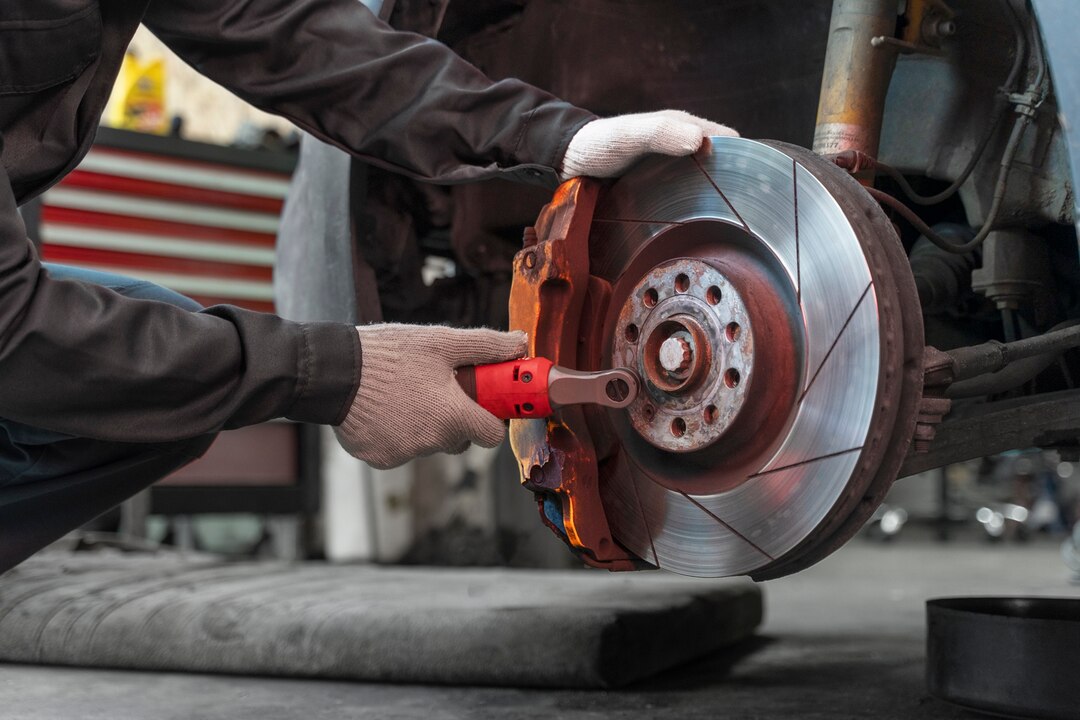Brake rotors are a critical component of a vehicle’s braking system, responsible for slowing down and stopping the vehicle by converting kinetic energy into heat energy. While they may seem like simple discs, brake rotors come in various types, each offering unique characteristics and performance benefits. Understanding the different types of brake rotors available can help you make informed decisions when it comes to maintaining or upgrading your car’s braking system. Here’s a comprehensive overview of the various types of car brake rotors:
- Standard Cast Iron Rotors:
Standard cast iron rotors are the most common type found in vehicles today. They are durable, cost-effective, and suitable for everyday driving conditions. Cast iron rotors provide reliable braking performance and are available in solid or vented designs, with vented rotors offering better heat dissipation and fade resistance. - Drilled Rotors:
Drilled rotors feature holes drilled into the surface of the rotor, which helps dissipate heat and gases generated during braking. These rotors are often favored for high-performance applications due to their improved cooling efficiency and resistance to brake fade. However, drilled rotors may be prone to cracking under extreme stress and are not recommended for heavy-duty use. - Slotted Rotors:
Slotted rotors feature shallow slots or grooves machined into the rotor’s surface, designed to sweep away water, debris, and brake dust for improved braking performance. Slotted rotors offer enhanced bite and initial brake response, making them popular for performance driving and towing applications. They also help prevent brake pad glazing and maintain consistent friction levels. - Cross-Drilled and Slotted Rotors:
Cross-drilled and slotted rotors combine the benefits of both drilled and slotted designs, offering improved cooling and debris removal. These rotors feature a combination of drilled holes and slots, providing enhanced brake performance and reducing the risk of rotor cracking. Cross-drilled and slotted rotors are often chosen for high-performance vehicles and aggressive driving conditions. - Composite Rotors:
Composite rotors utilize a combination of materials, such as carbon ceramic or carbon-fiber reinforced ceramics, to achieve lightweight construction and superior heat dissipation. These rotors offer excellent braking performance, reduced unsprung weight, and enhanced durability compared to traditional cast iron rotors. Composite rotors are commonly found in high-performance and racing applications due to their superior performance characteristics. - Slotted and Drilled Rotors:
Slotted and drilled rotors combine the benefits of slotted and drilled designs, offering improved cooling, debris removal, and braking performance. These rotors feature both shallow slots and drilled holes, providing optimal heat dissipation and fade resistance. Slotted and drilled rotors are suitable for a wide range of driving conditions, from daily commuting to spirited driving.
When selecting brake rotors for your vehicle, it’s essential to consider factors such as driving habits, vehicle usage, and budget. While high-performance rotors may offer superior braking performance, they may also come with a higher price tag and require more frequent maintenance. On the other hand, standard cast iron rotors are reliable and cost-effective but may not provide the same level of performance under demanding conditions. Ultimately, choosing the right type of brake rotors depends on your specific needs and preferences.
Whether you’re looking to upgrade your vehicle’s braking system for improved performance or simply need to replace worn-out rotors, understanding the different types of brake rotors available can help you make informed decisions. By selecting the right rotors for your vehicle and driving requirements, you can ensure optimal braking performance, safety, and reliability on the road.











